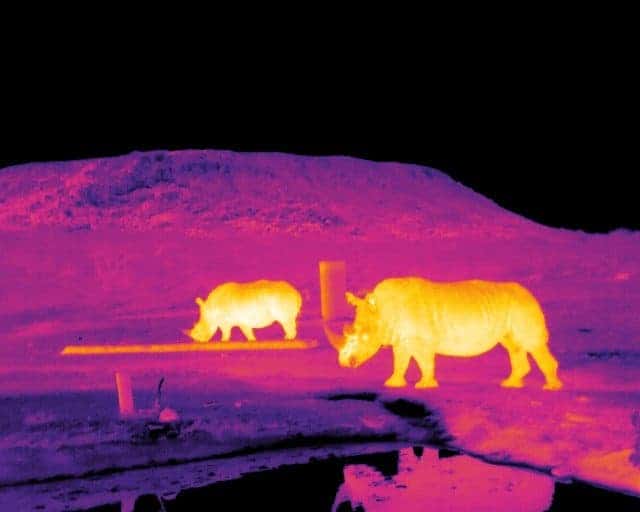What do star-hunting and poacher-catching have in common? I’m a big fan of both — also, the technology employed.

Image credits Endangered Wildlife Trust / LJMU.
Researchers at the Royal Astronomical Society and Liverpool John Moores University (LJMU) plan to turn star-hunting algorithms to more Earthly pursuits — well, to poacher pursuit, to be exact. They hope this will help conservationists better defend the planet’s most endangered species.
I spy with my little astronomical eye…
The technical details are a bit stuffy and not completely clear, but essentially, the software in question uses on heat emission readings to pick out galaxies or stars invisible to the naked eye. It relies on instruments such as the Thermal Emission Imaging System (THEMIS) camera on NASA’s Mars Odyssey orbiter to gather the raw data, and an algorithm trained to trawl through it and recognize the shape of far-off stars or galaxies.
But why limit a good tool to only one job? Working alongside staff members from the Chester Zoo and Knowsley Safari Park, the researchers reprogrammed the star-gazing algorithm to recognize a variety of different animals and environments. Like a biodiversity Batman, it will use this knowledge to keep endangered species safe from poachers, warding off extinction at the hands of greedy men.
The project is based on machine-learning algorithms and astronomical detection tools developed through open source software, Astropy. An initial pilot project conducted in mid-2017 at a farm in the Wirral in northwest England tested the concept using infrared drone footage of humans and cows. The LJMU team then teamed up with Knowsley Safari and Chester Zoo to capture the unique thermal profiles of various animals, including rhinos and baboons, and build up a library of different animal thermal signatures. The team has now moved onto field tests to detect endangered animals in their native habitats.
Using thermal cameras to see animals in the dark isn’t a new idea. It’s particularly effective at keeping tabs on them in darkness or when they try to camouflage themselves. What’s new here is the automated recognition software that can decide whether it’s looking at ‘an animal’ or ‘a human’.
“We have been able to combine the technical expertise of astronomers with the conservation knowledge of ecologists to develop a system to find the animals or poachers automatically,” said Dr Claire Burke who works at the Liverpool John Moores University.
The system is particularly exciting since poachers like to ply their bloody trade under the cover of darkness — on account of it being ‘illegal’ and all that. By automatically keeping tabs on the animals and warning gatekeepers whenever a poacher tries to come close, the system should help keep the animals safe.
“Our aim is to make a system that is easy for conservationists and game wardens to use anywhere in the world, which will allow endangered animals to be tracked, found and monitored easily and poaching to be stopped before it happens,” added Burke.
The team has already conducted trial runs of the software using flying drones equipped with infrared cameras that keep tabs on animals at night via their thermal signature. This initial field trial was carried out in South Africa, on an indigenous, fluffy, endangered species: the Riverine rabbit (Bunolagus monticularis). Further trials are planned, starting with endangered Orangutans in Malaysia, river dolphins in Brazil, and lastly spider monkeys in Mexico.
Drones were used instead of fixed cameras as they’re better suited to monitoring huge swaths of terrain, and they have virtually no impact on the workings of the habitats or animals they fly over. Right now, the team is working on getting the drones flying safely even in bad weather. The software itself is also being refined and upgraded to compensate for atmospheric effects, weather, and other environmental factors that could interfere with the thermal readings.
The project was presented by Claire Burke at the European Week of Astronomy and Space Science (EWASS) in Liverpool on Tuesday, 3rd April.






